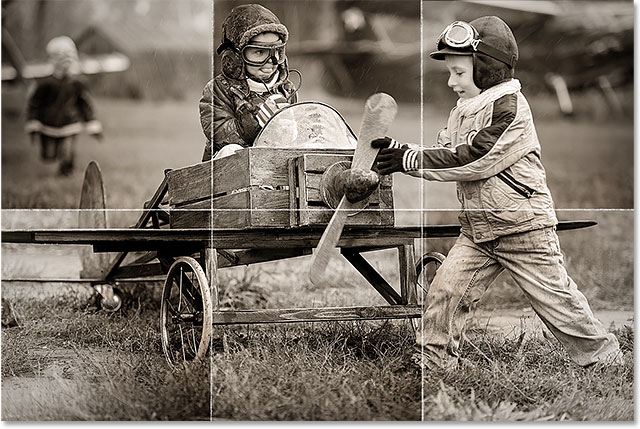Introduction:
Adobe Photoshop, a digital realm where creativity thrives, offers a plethora of tools and techniques to breathe life into two-dimensional images. Among these, the Folds and Creases Effect stands out as a captivating method to infuse depth and realism into digital compositions. This extensive guide delves into the intricacies of creating the Folds and Creases Effect in Photoshop, providing a step-by-step journey through its implementation, considerations for realistic outcomes, and advanced techniques to elevate your digital artistry. Whether you’re a digital artist exploring new dimensions or a seasoned designer seeking to add a touch of realism, this guide promises to unveil the secrets behind this transformative visual effect.
I. Defining the Folds and Creases Effect:
A. Conceptual Understanding:
- The Folds and Creases Effect mimics the appearance of folds, wrinkles, or creases in a surface, adding a tactile quality to a digital image.
- This technique enhances the perception of depth and realism, contributing to a more immersive visual experience.
B. Artistic Applications:
- Folds and creases can be strategically applied to clothing, paper, fabric, or any surface within an image.
- Artists use this effect to convey texture, simulate movement, or enhance the overall narrative of a composition.
II. Preparing the Canvas: Initial Steps in Photoshop
A. Importing the Base Image:
- Open Adobe Photoshop and import the image to which you want to add the Folds and Creases Effect.
- Choose an image with elements that could naturally exhibit folds, such as clothing or fabric.
B. Duplicate the Background Layer:
- Create a duplicate layer of the background image to maintain the original.
- This ensures a non-destructive editing process, allowing for adjustments as needed.
III. Creating Folds and Creases:
A. Selection Tools:
- Use selection tools such as the Lasso or Pen tool to outline areas where folds or creases will be added.
- Refine selections for precise control over the effect.
B. Layer Masking:
- Apply layer masks to the duplicated layer based on the selections.
- Layer masks allow for non-destructive editing, enabling adjustments as the effect develops.
IV. Adding Depth with Shadows and Highlights:
A. Shadow Creation:
- Use the Brush tool to paint shadows in areas where folds or creases would naturally cast shadows.
- Adjust opacity and blending modes for a realistic shadow effect.
B. Highlight Application:
- Similarly, use the Brush tool to add highlights along the raised portions of the folds.
- Adjust opacity and blending modes to ensure a subtle, yet impactful, highlight effect.
V. Texture Overlay Techniques:
A. Utilizing Textures:
- Incorporate texture overlays to simulate the tactile feel of fabric or paper.
- Experiment with blending modes and opacity settings for a seamless integration of textures.
B. Brush Techniques for Realism:
- Use custom brushes to replicate the texture of different fabrics.
- Adjust brush settings such as size, opacity, and flow for varied and realistic results.
VI. Considerations for Realism:
A. Consistent Light Source:
- Maintain consistency in the direction of light to ensure realistic shadow and highlight placement.
- A consistent light source enhances the credibility of the Folds and Creases Effect.
B. Matching Textures:
- Ensure that added textures align with the original texture of the image.
- This cohesion contributes to a more natural and convincing effect.
VII. Advanced Techniques and Tips:
A. Depth of Field:
- Introduce depth of field effects by blurring distant or less prominent folds.
- Mimicking real-world photography, depth of field adds a sense of realism.
B. Wrinkle Variations:
- Incorporate variations in wrinkle sizes and shapes to avoid a repetitive appearance.
- Diversity in folds enhances the natural look of the Folds and Creases Effect.
VIII. Troubleshooting Common Challenges:
A. Overemphasis on Folds:
- Avoid excessive or unrealistic folds that may distract from the overall composition.
- Aim for a balance that enhances rather than overwhelms the image.
B. Inconsistencies in Lighting:
- Ensure that shadows and highlights align with the image’s existing lighting conditions.
- Inconsistent lighting may compromise the realism of the Folds and Creases Effect.
IX. Finalizing and Exporting:
A. Merge Layers and Save:
- Once satisfied with the Folds and Creases Effect, merge visible layers.
- Save the final image in the desired format.
X. Conclusion:
The Folds and Creases Effect in Photoshop offers a gateway to infusing depth, texture, and realism into digital compositions. This comprehensive guide has navigated through the intricate steps of creating this transformative effect, from initial preparations to advanced techniques. Embrace the artistry of folds and creases, experiment with various images, and elevate your digital artistry by mastering the ability to introduce dimensionality to your creations. Whether enhancing the fabric of clothing, adding texture to paper, or simulating movement, the Folds and Creases Effect empowers artists to take their digital compositions to new heights, transcending the boundaries of the two-dimensional canvas.
